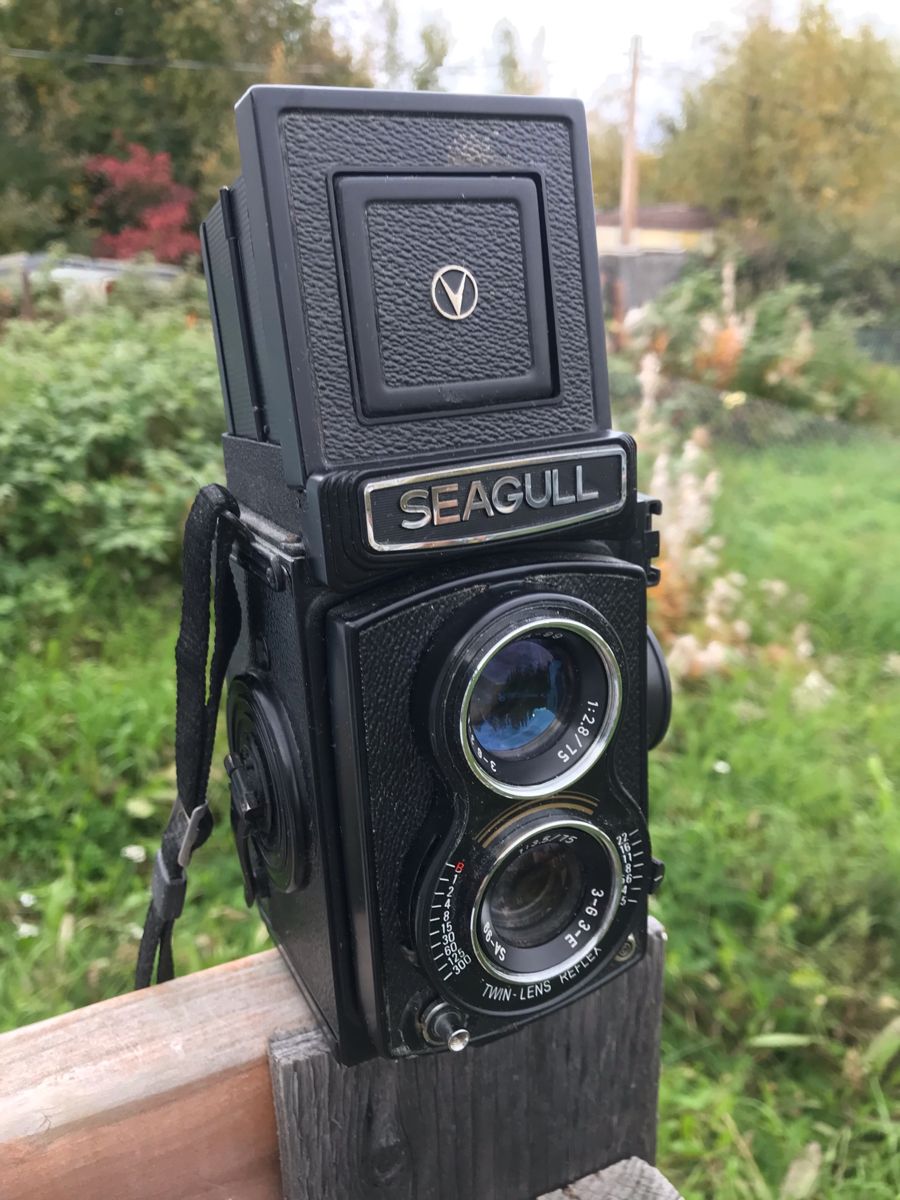Since I was a child I have enjoyed being behind the lens. I received my first camera in the late 70s, a Kodak Instamatic. The moment I got my first roll of developed film back, I was hooked. Even in this era of instant digital images, I maintain a number of film cameras. In this review, I will examine the first medium format camera I ever purchased.
Seagull – The Company
Shanghai Seagull Camera Ltd. is a Chinese camera manufacturer. Founded in 1958, they have produced several different types of cameras, though their twin-lens reflex cameras are quite popular for inexpensive medium format cameras.
While the term “knockoff” is often tossed about in discussions of Seagull cameras, I find that a bit unfair, as it implies a lower level of quality, which, as I’ll discuss in a bit, seems to underestimate the abilities of these cameras. It is true that some of the camera models were based on other brands, but, at least in my (admittedly limited) experience, the quality has proven very good.
While it appears that Seagull Camera is still around, I have only had luck finding cameras on various auction sites, primarily eBay. eBay is where I purchased mine back in the early 2000s. Prices vary considerably but seem to fall between $80 – 300.
Seagull Twin Lens Reflex
While it does not appear to say this anywhere on the camera itself, this is basically a Seagull 4A-105 Twin Lens Reflex camera. As such it has a 75mm f/3.5 imaging lens. The top lens goes to the viewfinder, while the bottom lens is the picture-taking lens. While not exact, the viewfinder does do a good job of approximating the final image. A small magnifier can pop up over the top view to aid in focusing. The aperture range is from f/3.5 – f/22. Images are in square medium format at 6cm x 6cm on 120 roll film.
The camera comes with a hot-shoe and flash-sync socket, a cable release socket, and a depth-of-field scale on the focusing knob. Shutter speed can be set from 1 second to 1/300 second and includes a bulb mode. The film advance crank works with a button for easy double exposures.
My Experience
I consider myself fairly rough on cameras. A bad habit of tossing cameras into a car seat or backpack tends to add to the dings and scratches my cameras suffer. The Seagull has come through this for around 20 years with few scratches. However, one plastic thumb lever for the shutter speed slider has come off. The slider is still functional so I have not found it necessary to repair.
This is a purely mechanical camera. As such it has no exposure meter. With the availability of light meter apps for most smartphones, or, you know, an actual hand-held light meter, this should not be a problem. Images are sharp. Lovers of interesting bokeh may be a bit disappointed. Areas outside the main focus just seem to blur into the background.
I no longer have my own darkroom. Our current house is a bit small for that. So I have not used this camera much lately. Mostly, I just need to get off my butt and find a decent place to mail film in. I would love to get back into medium format and play with the square visual that this camera provides.
